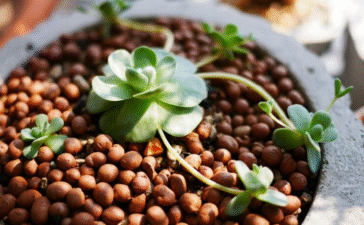Yellow flowers bring a splash of sunshine and joy wherever they bloom. Their vibrant color can instantly lift spirits and add warmth to any garden, home, or bouquet. Yellow in nature often signals happiness and energy, and these flowers are no exception. This guide explores the world of yellow colour flowers, from their diverse types and rich symbolism to practical tips on how to care for them.
The importance of yellow flowers goes beyond their visual appeal. They play a significant role in gardening and decoration, offering a versatile hue that pairs well with a wide range of other colors. Whether you’re designing a cheerful garden bed or creating a centerpiece for a special occasion, understanding the nuances of yellow flowers can help you make the perfect choice. They represent friendship, new beginnings, and pure delight, making them a meaningful addition to any floral arrangement.
Types of yellow colour flowers
Many popular flowers come in stunning shades of yellow, each with its unique charm and characteristics. Knowing the different types of yellow flowers can help you select the right ones for your garden or home.
Sunflowers: The Ultimate Symbol of Happiness
Sunflowers are perhaps the most iconic yellow colour flowers, known for their large, sunny faces that follow the sun throughout the day. They symbolize happiness, adoration, and warmth, making them a favorite in gardens and bouquets. Their impressive height and bold presence can create a dramatic backdrop in any garden landscape.
Daffodils: Harbingers of Spring
Daffodils are one of the first signs of spring, with their vibrant yellow petals bringing life back to the garden after a long winter. These springtime bloomers are easy to grow and represent rebirth and new beginnings. Their cheerful trumpets are a welcome sight in garden borders, containers, and as cut flowers indoors.
Marigolds: Hardy and Vibrant Garden Staples
Yellow marigolds are hardy, low-maintenance flowers that are perfect for garden borders and vegetable patches. Their bright, pom-pom-like blooms are not only beautiful but also help deter common garden pests. Marigolds are resilient and can thrive in various conditions, offering a long-lasting display of color throughout the summer and fall.
Lilies: Elegant and Fragrant Beauties
For a touch of elegance, yellow lilies are an excellent choice. Their large, trumpet-shaped flowers and sweet fragrance make them ideal for special occasions. Yellow lilies symbolize happiness, gratitude, and healing, adding a sophisticated and meaningful element to floral arrangements and garden designs.
Tulips: Cheerful and Classic Blossoms
Bright and cheerful, yellow tulips are a classic choice for home décor and spring gardens. They represent cheerful thoughts and sunshine. Available in a wide variety of shapes and sizes, yellow tulips can be used to create stunning displays in garden beds, pots, and as cut flowers in vases.
Other notable yellow flowers include the fragrant jasmine, the elegant gardenia, and classic yellow roses, each offering its own unique beauty and symbolism to explore.
The Meaning and Symbolism of yellow colour flowers
Flowers have long been used to convey emotions, and the color yellow carries its own special significance. What yellow flowers represent can vary across cultures, but they are most commonly associated with positive feelings.
The primary meaning of yellow flowers is friendship, joy, and positivity. A bouquet of yellow flowers is the perfect way to celebrate a friendship or send a message of happiness to a loved one. Unlike red roses, which are tied to romantic love, yellow roses are a platonic symbol of affection and care.
Yellow is also a color of renewal and growth. In many traditions, it is linked to the sun, which provides life and energy. This connection makes yellow flowers a symbol of new beginnings, optimism, and intellectual energy. They can brighten a room and bring a sense of clarity and hope.
Yellow colour flowers for Special Occasions
The cheerful nature of yellow flowers makes them suitable for a variety of events. Knowing when to use yellow flowers in bouquets and arrangements can help you set the right tone.
For weddings, yellow flowers can brighten the big day with their cheerful and optimistic vibe. They pair beautifully with white, blue, and purple, creating a vibrant and joyful atmosphere.
For birthdays, yellow flowers are a wonderful way to celebrate another year of life and express wishes for happiness and success. A bright yellow flower bouquet is a gift that is sure to bring a smile.
Even at funerals, yellow flowers can hold a special symbolic representation. While somber colors are common, yellow can represent a new beginning or celebrate a life lived with joy and happiness. They offer a message of hope and remembrance.
How to Care for yellow colour flowers
Growing yellow flowers in your garden can be a rewarding experience. Providing the right care will ensure they thrive and produce beautiful blooms.
Most popular yellow flowers, such as sunflowers and marigolds, require plenty of sunlight at least six hours of direct sun per day. The ideal soil is well-draining and rich in organic matter. Water them regularly, but be careful not to overwater, as this can lead to root rot. Seasonal considerations are also important; for example, tulips and daffodils are typically planted in the fall for spring blooms. This yellow flowers care guide can help you get started.
Yellow Flowers That Thrive in Different Environments
It’s important to choose yellow flowers that are suited to your local climate. Sun-loving yellow flowers like sunflowers and marigolds are perfect for sunny spots. For areas with partial shade, consider shade-tolerant yellow flowers such as daffodils, tulips, and some varieties of lilies. Researching the specific needs of each plant will help you create a flourishing garden.
Medicinal and Other Uses of yellow colour flowers
Beyond their beauty, some yellow flowers have practical applications for health and wellness. These medicinal uses of yellow flowers have been recognized in traditional practices for centuries.
Marigolds, for instance, are known for their skincare and anti-inflammatory benefits. Calendula, a type of marigold, is often used in creams and ointments to soothe skin irritations and promote healing. The marigold medicinal benefits make it a valuable plant in any wellness garden.
Daffodils also have surprising health benefits. While the bulbs are toxic if ingested, extracts have been studied for their potential to help with seasonal allergies and other conditions.
Best Yellow Flowers for Decorating Your Home and Garden
Incorporating yellow flowers into your home décor is a simple way to add warmth and vibrancy. Using yellow flowers in vases, arrangements, and centerpieces can brighten any room. When decorating with yellow flowers, consider complementing them with other colors like blue, purple, or white to create a balanced and visually appealing display.
Common Challenges and How to Overcome Them
Even the hardiest plants can face challenges from pests and diseases. Knowing how to troubleshoot yellow flower care can keep your garden healthy. Common yellow flower pests include aphids and slugs. These can often be manage with natural predators like ladybugs or by using insecticidal soap.
Common yellow flower diseases include powdery mildew and blight. Ensuring good air circulation around your plants and avoiding overhead watering can help prevent these issues. If problems arise, organic fungicides can be an effective treatment.
You would also like to read: “flowers with orange“
Embracing the Radiance of Yellow Flowers
Yellow flowers are a testament to nature’s ability to bring joy and beauty into our lives. Their beauty, rich meaning, and versatility make them a wonderful choice for gardens, homes, and special occasions. Whether you’re an experienced gardener or just starting, we encourage you to experiment with yellow flowers. Their sunny disposition is sure to brighten your world.
Frequently Asked Questions
What is the significance of yellow colour flowers in different cultures?
In most Western cultures, yellow flowers symbolize friendship, happiness, and joy. They are often given to celebrate new beginnings or to cheer someone up. In some Eastern cultures, however, yellow can be associated with royalty and sacredness. For example, in Japan, the yellow chrysanthemum is a symbol of the emperor and the imperial family. It’s always a good idea to consider cultural context when gifting flowers.
How can I plant and care for yellow flowers in my garden?
To plant and care for yellow flowers, start by choosing a location that provides the appropriate amount of sunlight for your chosen variety. Most yellow flowers, like sunflowers and marigolds, thrive in full sun. Ensure the soil is well-draining and enrich it with compost. Water regularly, especially during dry periods, but allow the soil to dry out slightly between waterings. Fertilize during the growing season according to the plant’s specific needs to encourage healthy blooms.
Can yellow flowers be used in bouquets for all occasions?
Yes, yellow flowers are incredibly versatile and can be used for almost any occasion. They are perfect for birthdays, get-well-soon gestures, and friendship celebrations due to their cheerful symbolism. For more formal events like weddings, they add a touch of brightness and joy. While less common for romantic gestures, a bouquet of yellow roses can be a beautiful way to express platonic love and appreciation.
What are the health benefits of marigolds and daffodils?
Marigolds, particularly the Calendula species, are well-known for their medicinal properties. They contain anti-inflammatory and antiseptic compounds, making them useful in topical creams and salves for soothing skin irritations, cuts, and burns. Daffodils, while toxic if eaten, contain compounds that have been researched for potential medical applications, including treatments for Alzheimer’s disease and managing seasonal allergies. However, they should only be used under professional guidance.












